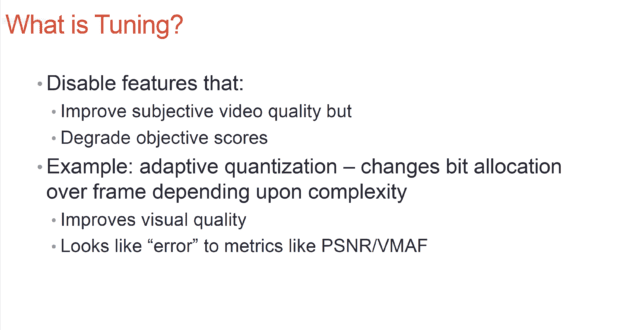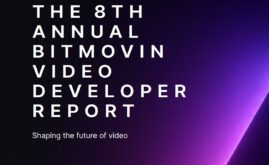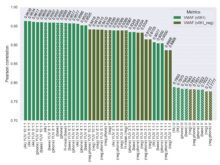I’m pulling together some materials for my pre-conference session at Streaming Media West (November 18-20 in Los Angeles) entitled Objective Quality Metrics 2D & 3D: What They Are, How To Compute Them, & How To Use Them. One lesson talks about “tuning” when encoding files to be measured with metrics like PSNR, VMAF, and SSIM. It’s a crucial issue to consider because as you’ll see in the slides, most codec vendors consider tuning essential to producing relevant results. Most academics tune as a matter of course, but practitioners like Netflix and Facebook don’t. I thought I would throw this lesson out there to get some comments before I finalize the handout, so click here to retrieve the slides.
If you have any thoughts, please send them to janozer@gmail.com.
The course is designed for encoding professionals who want to integrate objective quality metrics into their practice. I started using metrics about five years ago and consider them an absolute bedrock to my writing and consulting practices, though as I’ll explain in the session, I generally work in some forms of subjective quality confirmations. The session is in about three weeks and the description is shown below.
Here are the slides again: Tuning slides
Here’s the course description. I hope to see you next month in Los Angeles.
W4. Objective Quality Metrics 2D & 3D: What They Are, How To Compute Them, & How To Use Them
Monday, November 18: 1:30 p.m. – 4:30 p.m.
Every compression practitioner should understand what objective quality metrics do, how to compute them, and how to use them. This workshop guides attendees through the following steps: an introduction to metrics like PSNR, SSIM, SSIMplus, and VMAF, plus several 3D metrics; how to compute metrics with open source tools like FFmpeg and VMAF Master, as well as third-party tools like the Moscow State University Video Quality Measurement tool and SSIMWAVE VOD Inspector; how to interpret the results; how to create rate-distortion curves and BD-Rate computations: and how to use these tools to choose a preset, compare codecs and encoders, build an encoding ladder, and other functions.
Speaker:
Jan Ozer, Principal, Streaming Learning Center and Contributing Editor, Streaming Media
 Streaming Learning Center Where Streaming Professionals Learn to Excel
Streaming Learning Center Where Streaming Professionals Learn to Excel









